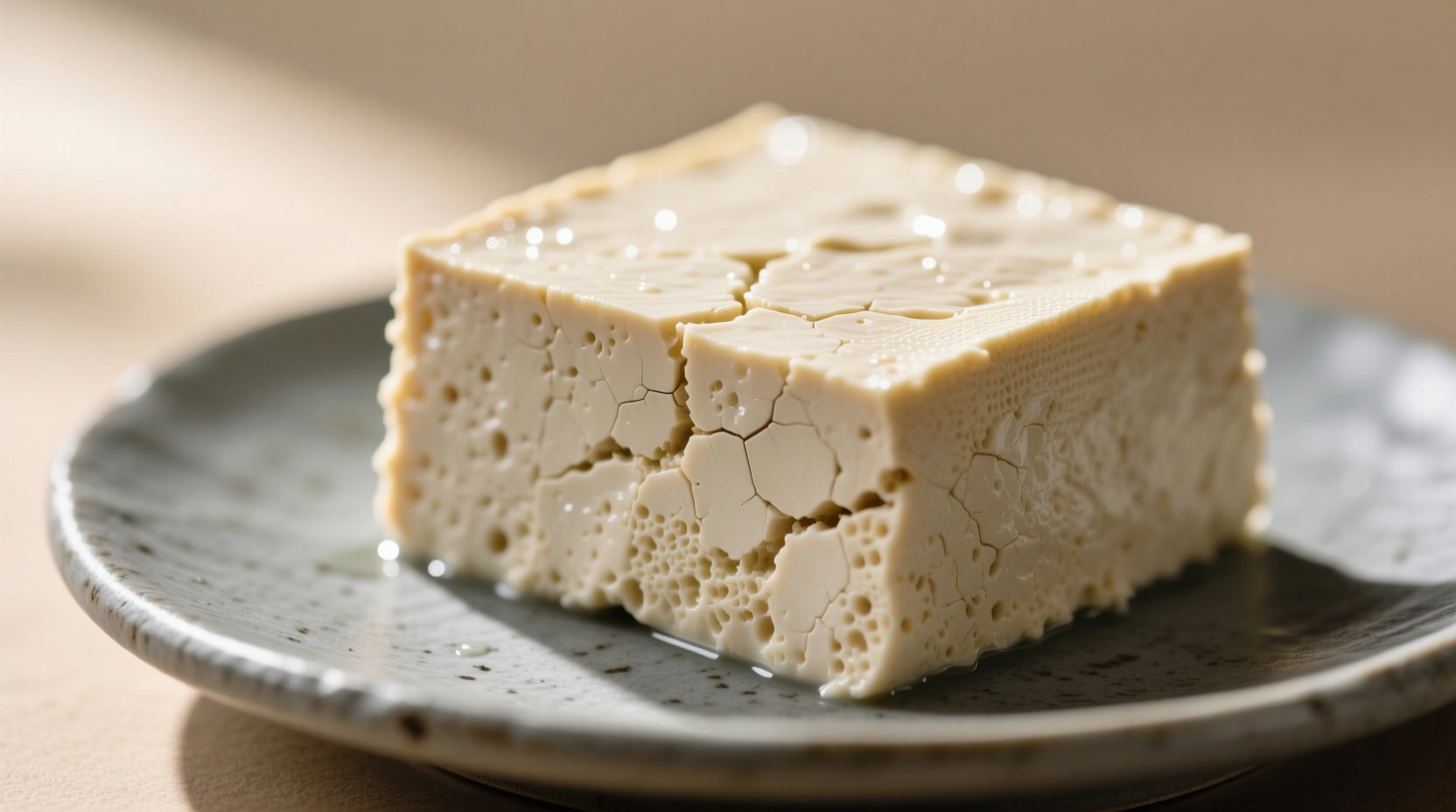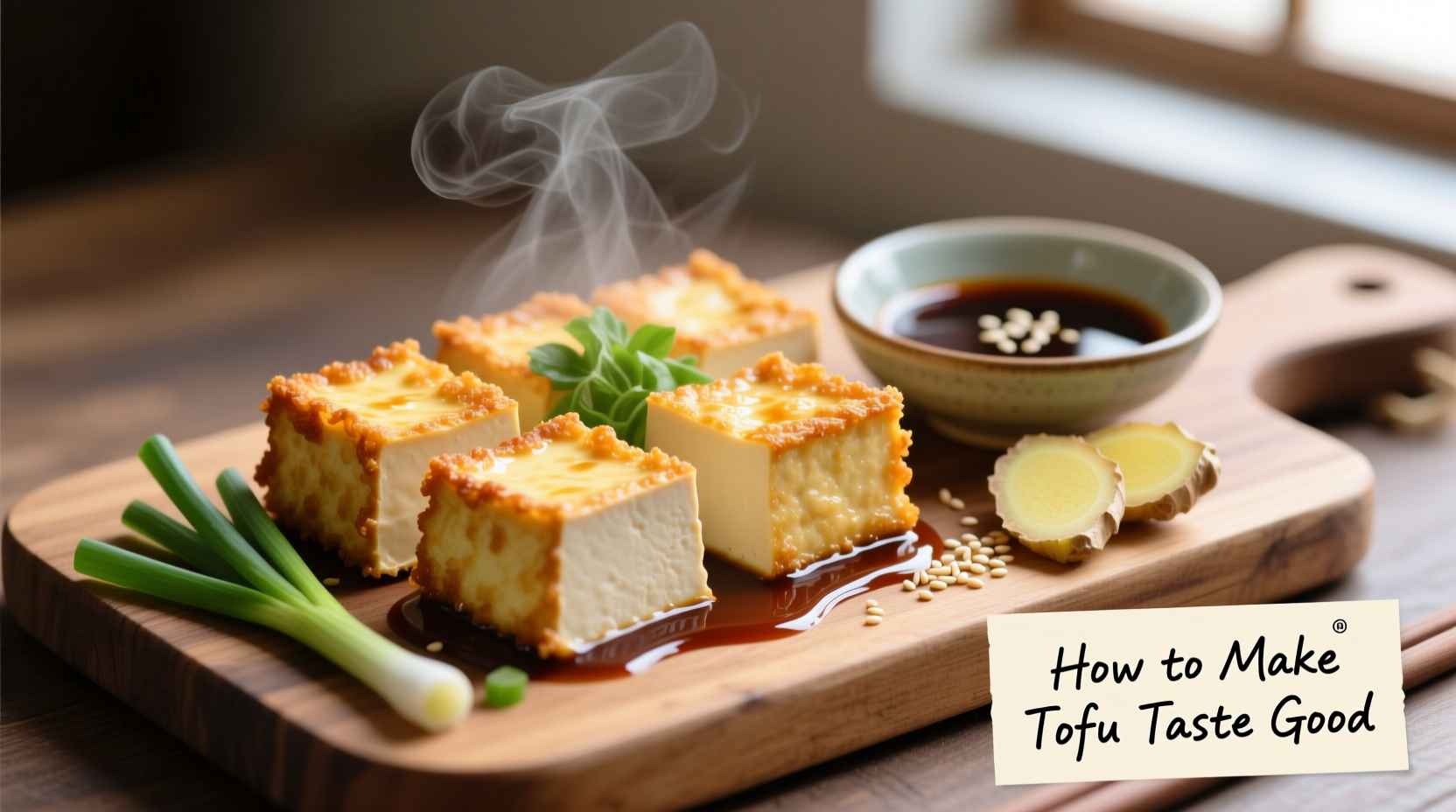Why Tofu Seems Bland (And How to Fix It)
Many home cooks struggle with tofu because they don't understand its fundamental composition. Tofu contains 85-90% water, creating a physical barrier that prevents flavors from penetrating. When you simply add sauce to unprepared tofu, the liquid sits on the surface rather than being absorbed. The solution lies in moisture management—not in adding more flavoring, but in creating conditions where tofu can actually absorb those flavors.
| Tofu Type | Moisture Content | Best For | Flavor Absorption Time |
|---|---|---|---|
| Extra Firm | 85-87% | Stir-fries, grilling | 30-60 minutes |
| Firm | 87-89% | Baking, pan-frying | 20-40 minutes |
| Soft/Silken | 90-92% | Blending, soups | N/A (not recommended) |
The Pressing Process: Creating Flavor Space
Proper pressing isn't just about texture—it creates microscopic channels where flavors can penetrate. While commercial presses work well, you can achieve professional results with household items. Place your tofu block between two plates with a 2-3 pound weight on top (like a can of tomatoes) for 15-30 minutes. For even better results, freeze your tofu first, then thaw it—this creates larger pores that absorb marinades up to 300% better according to research from the Journal of Food Science.

Flavor Foundation Techniques
Before adding complex flavors, establish a flavor foundation with this professional chef technique: simmer pressed tofu in salted water (1 tablespoon salt per quart) with optional aromatics like ginger or garlic for 10-15 minutes. This simple step seasons the tofu from within and prepares it for further flavor absorption. The salt breaks down protein structures slightly, creating additional space for flavors to penetrate—a process food scientists call "osmotic priming."
Marinating Science: Timing Matters
Most home cooks make the critical mistake of marinating tofu for too long or too short a time. Unlike meat, tofu doesn't benefit from extended marinating because its protein structure is different. Acid-based marinades (with vinegar or citrus) work best for 20-30 minutes, while oil-based marinades need only 10-15 minutes. Over-marinating actually breaks down tofu's structure, making it mushy rather than flavorful.
Cooking Methods That Maximize Flavor
The cooking method you choose dramatically affects final flavor. For maximum taste development:
- Pan-frying: Use medium-high heat with minimal oil—the goal is caramelization, not deep frying. Flip only once for perfect sear.
- Baking: 400°F for 25-30 minutes creates even texture without oil absorption.
- Air frying: 375°F for 12-15 minutes produces crispy exterior with minimal oil.
Professional chefs always add sauce in the final 2-3 minutes of cooking—adding it too early causes burning and prevents proper adhesion.
Flavor Pairing Guide by Cuisine Type
Understanding flavor chemistry helps you create balanced tofu dishes:
- Asian-inspired: Combine soy sauce (umami), rice vinegar (acid), sesame oil (aroma), and a touch of sweetness—the balance creates authentic flavor without overpowering.
- Mediterranean: Lemon juice, garlic, oregano, and smoked paprika work because the acid cuts through tofu's mildness while spices provide complexity.
- Mexican: Lime juice, cumin, and chipotle create the perfect acid-spice balance that complements tofu's texture.
For maximum umami impact, add dried mushrooms or nutritional yeast to your marinade—these contain glutamates that enhance overall flavor perception.
Common Mistakes That Ruin Tofu Flavor
Avoid these flavor-killing errors:
- Skipping the pressing step—water prevents browning and flavor absorption
- Using low heat—prevents Maillard reaction needed for flavor development
- Over-marinating—breaks down tofu's structure making it mushy
- Adding sauce too early—causes burning and poor adhesion
Remember that properly prepared tofu should have a slightly chewy texture with golden-brown edges—this indicates successful flavor development through caramelization.
When to Use Different Tofu Types
Not all tofu works for every application. Understanding context boundaries prevents flavor failures:
- Extra firm: Best for stir-fries, grilling, and any application requiring defined shape
- Firm: Ideal for baking, pan-frying, and dishes where some texture variation is acceptable
- Medium: Works in soups and stews where tofu will break down slightly
- Silken: Only for blending, sauces, or desserts—never for standalone flavor applications
For best results in flavor-focused dishes, always choose extra firm or firm tofu that's been properly pressed.
Practical Flavor Boosters
These chef-recommended additions transform basic tofu:
- Smoked salt: Adds depth without liquid content that would dilute flavors
- Miso paste: 1 teaspoon in marinade provides complex umami
- Rice wine: Replaces some liquid in marinades for authentic Asian flavor
- MSG: A pinch enhances overall flavor perception without altering taste
For beginners, start with simple combinations like soy-ginger or lemon-herb before experimenting with more complex flavor profiles.











 浙公网安备
33010002000092号
浙公网安备
33010002000092号 浙B2-20120091-4
浙B2-20120091-4